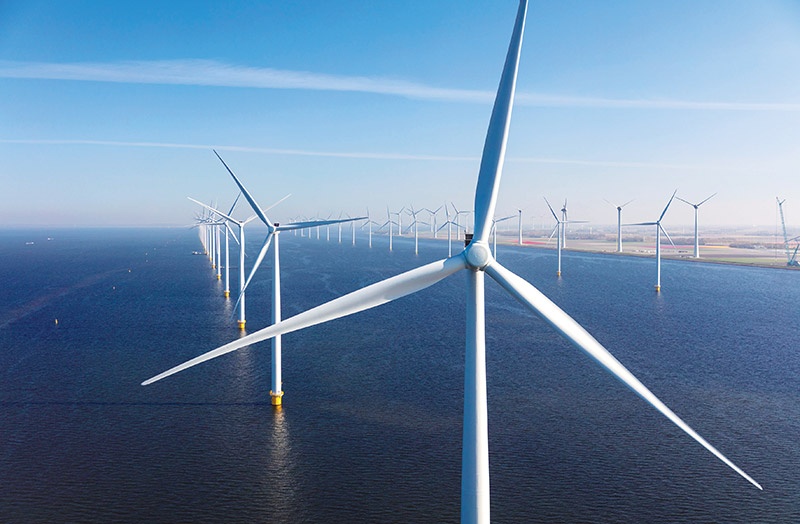Investors clamour for wind incentives
 |
| Wind experts in Vietnam are suggesting improved bankability in order to attract finance from elsewhere, Photo: Shutterstock |
Mark Hutchinson, chair of the Southeast Asia Task Force at the Global Wind Energy Council (GWEC) said the investment rate of offshore wind power projects is very large. Therefore, Vietnam needs to have a clear process and an appropriate price to attract investors. At the same time, it is also necessary to consider the supply chain and develop seaport infrastructure.
Commenting on the target of 7GW by 2030 as set out in the draft Power Development Plan VIII (PDP8), Hutchinson said it is necessary to have a conversion mechanism for the first 4GW, then implement a bidding mechanism for the remaining 3GW.
“If we switch directly to the bidding mechanism, this goal will be difficult to achieve. Besides this, it is necessary to have capital financing from international banks because domestic banks have limited capital supply,” Hutchinson said at a conference two weeks ago on the route to market for offshore wind power development. “To attract international banks, Vietnam needs clarity in the power purchase agreement (PPA). In the contract, it is necessary to solve the problems of reducing capacity and electricity prices.”
Nguyen Thi Thanh Binh, deputy general director of multi-sectoral T&T Group, said that it should consider and implement the transition period before implementing the bidding and auction policy. The transition phase is to follow the fixed electricity tariff suitable to Vietnam’s conditions and would be applied to the first 7GW in the period up to 2030.
“This is the first stage of launching, shaping the development of a new and modern industry in Vietnam. Therefore, the government may consider starting with the investor selection mechanism, without bidding, on the basis that clear and proven criteria must be met in terms of capacity, experience, and financial resources,” said Binh.
Binh pointed out that the lengthy process of project approval and investor selection will affect the development target of offshore wind power development until 2030 as, currently, the draft PDP8 has only allocated offshore wind capacity by region and not by locality.
Stuart Livesey, senior director and head of Copenhagen Offshore Partners in Vietnam, shared Taiwan’s experience as the government has developed a project roadmap to create confidence for domestic investors and suppliers in finance, technology, and equipment.
“Taiwan’s route is to go from piloting for businesses to demonstrating its capabilities through small-scale projects, then drawing from experience to carry out large projects,” Livesey said. “During the pilot phase, the government divides the feed-in tariff according to the timelines, in order to encourage businesses to complete the project early to enjoy a higher price.”
He suggested that Vietnam needs to ensure a flexible policy to allow projects to choose the latest technology because the tech is constantly changing. “Investors must also have the foresight to forecast technology,” he added.
The GWEC estimates that a simplified transition mechanism can be established within next year, and local authorities can then complete a selection process for a large tranche of 4GW of projects by the end of 2023. Financial closure and other project work can be finalised by mid-2026. The project construction work can then ensure that 4GW can reach commercial operations by the end of 2030.
This gives more time for potential delays in the supply chain, port development, and grid infrastructure, and enables projects to be developed in tranches rather than 7GW altogether, in a short timeframe. An auction scheme can be developed and run in parallel by the end of 2026 covering the remaining 2-3GW of volume targeted in the draft PDP8.
The GWEC also suggested improved PPA bankability to attract international finance, which will be required to bring in the large investment volumes required for offshore wind.
It explained two weeks ago at the conference, “Offshore wind investment is significantly larger when compared to onshore wind. There are a variety of ways that onshore wind projects are financed in Vietnam, including vendor finance, corporate balance sheets, and local bank guarantees, and these are mainly led by domestic investors. For comparison, the investment needs for a typical 500MW offshore wind project are approximately $1.5 billion (or $3 billion/GW), while an onshore project would typically be less than $100 million ($1.5 million/MW with project sizes typically less than 70MW). As such, the involvement of international banks in offshore wind is likely to be necessary.”
What the stars mean:
★ Poor ★ ★ Promising ★★★ Good ★★★★ Very good ★★★★★ Exceptional
Related Contents
Latest News
More News
- TCP Group partner with VNUS to launch water conservation project (December 25, 2025 | 14:00)
- Heavy industries set for pilot greenhouse gas quotas (December 25, 2025 | 10:00)
- Swedfund invests in MSME growth and climate action in Vietnam (December 19, 2025 | 11:42)
- GreenYellow brings solar energy to light up remote schools in Tuyen Quang province (December 19, 2025 | 08:00)
- Charge+, Grab partner to develop EV charging network in Vietnam (December 18, 2025 | 17:11)
- Linking sci-tech and innovation to Vietnam’s net-zero future (December 18, 2025 | 14:31)
- Driving double-digit growth through green and circular transformation in Vietnam (December 17, 2025 | 09:00)
- Standard Chartered and ACCA deepen collaboration to develop Vietnam’s talent for a sustainable future (December 15, 2025 | 18:18)
- Schaeffler reports strong early output from Dong Nai solar project (December 12, 2025 | 15:16)
- Forestry conference highlights biodiversity and sustainability goals (December 09, 2025 | 13:35)

 Tag:
Tag:





















 Mobile Version
Mobile Version